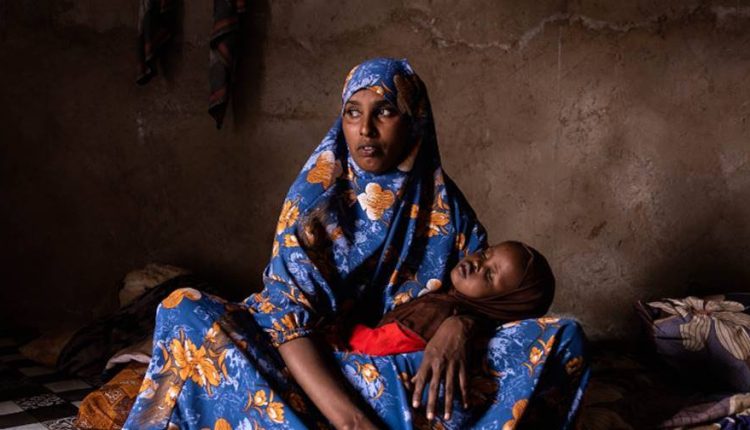War in Ukraine contributed to acute food and nutrition insecurity
The number of people experiencing acute food insecurity and requiring urgent food, nutrition and livelihood assistance increased for the fourth consecutive year in 2022, with over a quarter of a billion facing acute hunger and people in seven countries on the brink of starvation, according to the latest Global Report on Food Crises (GRFC), as SEEDS writes.
The annual report, produced by the Food Security Information Network (FSIN), was launched today by the Global Network Against Food Crises (GNAFC) – an international alliance of the United Nations, the European Union, governmental and non-governmental agencies, working to tackle food crises together.
The report finds that around 258 million people in 58 countries and territories faced acute food insecurity at crisis or worse levels (IPC/CH Phase 3-5) in 2022, up from 193 million people in 53 countries and territories in 2021. This is the highest number in the seven-year history of the report. However, much of this growth reflects an increase in the population analysed. In 2022, the severity of acute food insecurity increased to 22.7 percent, from 21.3 percent in 2021, but remains unacceptably high and underscores a deteriorating trend in global acute food insecurity.
“More than a quarter of a billion people are now facing acute levels of hunger, and some are on the brink of starvation. That’s unconscionable,” UN Secretary-General António Guterres wrote in the report’s foreword. “This seventh edition of the Global Report on Food Crises is a stinging indictment of humanity’s failure to make progress towards Sustainable Development Goal 2 to end hunger and achieve food security and improved nutrition for all.”
According to the report, more than 40 percent of the population in IPC/CH Phase 3 or above resided in just five countries – Afghanistan, the Democratic Republic of the Congo, Ethiopia, parts of Nigeria (21 states and the Federal Capital Territory – FCT), and Yemen.
People in seven countries faced starvation and destitution, or catastrophe levels of acute hunger (IPC/CH Phase 5) at some point during 2022. More than half of those were in Somalia (57 percent), while such extreme circumstances also occurred in Afghanistan, Burkina Faso, Haiti (for the first time in the history of the country), Nigeria, South Sudan and Yemen.
Around 35 million people experienced emergency levels of acute hunger (IPC/CH Phase 4) in 39 countries, with more than half of those located in just four countries – Afghanistan, the Democratic Republic of the Congo, the Sudan and Yemen.
Additionally, in 30 of the 42 main food crises contexts analysed in the report, over 35 million children under five years of age suffered from wasting or acute malnutrition, with 9.2 million of them with severe wasting, the most life-threatening form of undernutrition and a major contributor to increased child mortality.
While conflicts and extreme weather events continue to drive acute food insecurity and malnutrition, the economic fallout of the СOVID-19 pandemic and the ripple effects of the war in Ukraine have also become major drivers of hunger, particularly in the world’s poorest countries, mainly due to their high dependency on imports of food and agricultural inputs and vulnerability to global food price shocks.
Key drivers
Economic shocks have surpassed conflict as the primary driver of acute food insecurity and malnutrition in several major food crises. Cumulative global economic shocks, including soaring food prices and severe disruptions to markets, undermine countries’ resilience and capacity to respond to food shocks.
The report findings confirm that the impact of the war in Ukraine has had an adverse impact on global food security due to the major contributions of both Ukraine and Russia to the global production and trade of fuel, agricultural inputs and essential food commodities, particularly wheat, maize and sunflower oil. The war in Ukraine disrupted agricultural production and trade in the Black Sea region, triggering an unprecedented peak in international food prices in the first half of 2022. While food prices have since come down, also thanks to the Black Sea Grain Initiative and the European Union Solidarity Lanes, the war continues to affect food security indirectly, particularly in food import-dependent, low-income countries, whose fragile economic resilience had already been battered by the COVID-19 pandemic.
Breakdown of key drivers:
- Economic shocks (including the socioeconomic impacts of COVID-19 and the repercussions of the war in Ukraine) became the main driver in 27 countries with 83.9 million people in IPC/CH Phase 3 or above or equivalent – up from 30.2 million people in 21 countries in 2021. The economic resilience of poor countries has dramatically decreased over the past three years, and they now face extended recovery periods and less ability to cope with future shocks.
- Conflict/insecurity was the most significant driver in 19 countries/territories, where 117 million people were in IPC/CH Phase 3 or above or equivalent. In 2021, conflict was considered the main driver across 24 countries/territories with 139 million people in these phases of acute food insecurity. The lower estimate is explained by the fact that economic shocks surpassed conflict as the main driver of acute food insecurity in three countries still affected by protracted crises – Afghanistan, South Sudan and the Syrian Arab Republic.
- Weather/Climate extremes were the primary driver of acute food insecurity in 12 countries where 56.8 million people were in IPC/CH Phase 3 or above or equivalent, more than double the number of people (23.5 million) in eight countries in 2021. These extremes included sustained drought in the Horn of Africa, devastating flooding in Pakistan, and tropical storms, cyclones and drought in Southern Africa.
Paradigm shift
The international community has called for a paradigm shift towards better prevention, anticipation and targeting to address the root causes of food crises, rather than responding to their impacts when they occur. This requires innovative approaches and more coordinated efforts by international organizations, governments, the private sector, regional organizations, civil society and communities.
The activities should focus on more effective humanitarian assistance, including innovative approaches such as anticipatory actions and shock-responsive safety nets. From a development perspective, it is of utmost importance to scale up core investments to tackle the root causes of food crises and child malnutrition. This entails making agrifood systems more sustainable and more inclusive, including through the use of nature-based solutions, inclusive access to food and better risk mitigation. There is also a need for increased investments in the prevention, early detection and treatment of child wasting.
“This crisis demands fundamental, systemic change. This report makes clear that progress is possible. We have the data and know-how to build a more resilient, inclusive, sustainable world where hunger has no home — including through stronger food systems, and massive investments in food security and improved nutrition for all people, no matter where they live,” the UN Secretary-General wrote in the foreword.
The report’s publication was accompanied by a communiqué issued by the GNAFC.
Looking ahead
Conflicts, national and global economic shocks and weather extremes continue to be increasingly intertwined, feeding into one another and creating spiralling negative effects on acute food insecurity and nutrition. And there is no indication that these drivers will ease in 2023: climate change is expected to drive further weather extremes, the global and national economies face a grim outlook, while conflicts and insecurity are likely to persist.
According to 2023 projections available for 38 of the 58 countries/territories as of March 2023, up to 153 million people (or 18 percent of the analysed population) will be in IPC/CH Phase 3 or above. In addition, around 310 000 people are projected to be in IPC/CH Phase 5 across six countries – Burkina Faso, Haiti, Mali, parts of Nigeria (26 states and the FCT), Somalia and South Sudan, with almost three quarters of them in Somalia.
***
Note to editors
Acute food insecurity is when a person’s inability to consume adequate food puts their lives or livelihoods in immediate danger. It draws on internationally accepted measures of acute hunger, such as the Integrated Food Security Phase Classification (IPC) and the Cadre Harmonisé (CH). It is not the same as chronic hunger, as reported on each year by the UN’s annual State of Food Security and Nutrition in the World (SOFI) report. Chronic hunger is when a person is unable to consume enough food over an extended period to maintain a normal, active lifestyle.
About the Global Network and the Global Report
Founded in 2016, the Global Network Against Food Crises brings together the European Union, FAO, UNICEF, the United States of America, WFP and the World Bank in a unique partnership to improve analysis, evidence and consensus on the prevalence and severity of food crises; improve collective efforts to prevent and respond to these crises; and improve understanding of the underlying causes and interlinkages between food crises and other shocks beyond food.
The Global Report on Food Crises is the flagship publication of the Global Network and is produced by the Food Security Information Network (FSIN). Since 2016, the report has been providing a comprehensive global picture on the scale and magnitude of food crises by compiling the main global, regional and national food security analyses through a transparent and consensus-based process involving 16 international humanitarian and development partners, and aimed at informing and promoting timely, cost-efficient and need-based humanitarian, as well as resilience building actions.
Головні новини Seeds та агроідеї для зростання вашого бізнесу в Telegram Facebook Instagram
Youtube та Підписуйтесь!



